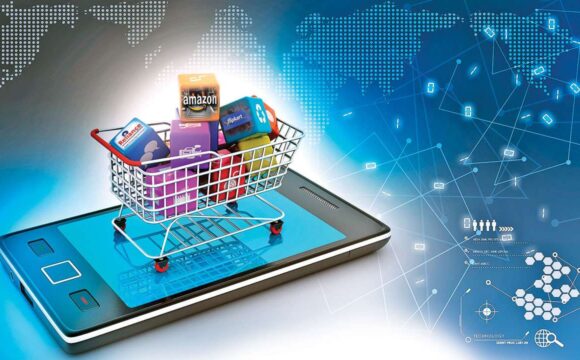In just a few decades, e-commerce has evolved from a secondary shopping option into the backbone of global retail. What once began as a tentative experiment in online transactions has become the default way many of us shop, changing not only how businesses sell products but also how consumers perceive value, convenience, and trust. Today, e-commerce is no longer defined merely by online stores—it has matured into an entire ecosystem that integrates technology, logistics, personalization, and digital communities.
The Evolution of E-commerce
The earliest stages of e-commerce were heavily transactional, focused on simply providing a way for consumers to purchase goods without stepping into a physical store. Convenience was the initial appeal. However, the model quickly outgrew its limited scope. The rise of mobile technology, the advent of social media, and the development of secure payment systems reshaped the digital marketplace. Now, e-commerce is not just selling—it is storytelling, experience creation, and even entertainment.
From the humble beginnings of static product listings, online retail has moved toward immersive brand experiences, featuring interactive product previews, personalized recommendations, and AI-driven customer support. It is this continual evolution that has made e-commerce adaptable and resilient, even through periods of global disruption.
The Heart of Modern E-commerce
At its core, modern e-commerce rests on three essential pillars: accessibility, personalization, and trust.
-
Accessibility: Shopping can happen anytime, anywhere, across devices, without geographical restrictions.
-
Personalization: From AI-driven recommendation engines to tailored promotions, customers are no longer anonymous—they are recognized as individuals with distinct preferences.
-
Trust: Secure payment gateways, transparent policies, and reliable delivery methods have replaced the early fears of online fraud and seller unreliability.
Together, these elements have transformed online shopping into a seamless, near-effortless process that rivals or even surpasses traditional in-store experiences.
The Shifting Consumer Mindset
One of the most remarkable outcomes of this evolution is the psychological shift in consumer perception. Shopping no longer requires a dedicated weekend outing. Instead, it has become a spontaneous, everyday activity. With a few taps on a smartphone, one can purchase groceries, luxury products, or even custom-tailored furniture.
Even more interesting is the rise of values-driven shopping. Consumers now expect more than efficient service; they want brands that align with their ethics. Whether it is eco-friendly packaging, fair labor practices, or local sourcing, e-commerce brands are adapting to meet a new consciousness-driven buyer behavior.
Technology as the Driving Force
Behind every smooth e-commerce transaction lies a complex technological infrastructure designed to make the experience intuitive. Some of the most influential innovations include:
-
Artificial Intelligence & Machine Learning: Predictive algorithms boost sales by offering relevant choices, while chatbots enhance customer service at scale.
-
Augmented Reality (AR): Virtual try-ons for apparel and furniture placement previews within home spaces reduce uncertainty and increase buyer confidence.
-
Voice Commerce: With the rise of smart home assistants, voice-activated shopping is becoming a new frontier.
-
Blockchain Solutions: Adding transparency in supply chains and bolstering trust through secure transaction verification.
Technology is not just a support system—it has become the differentiating factor that determines which brands stand out in a crowded digital marketplace.
The Rise of Social Commerce
One of the most intriguing developments in recent years is the integration of commerce directly into social media platforms. Social commerce positions shopping within the flow of digital interaction—bringing products to consumers in the same spaces where they connect with friends, share content, and seek inspiration.
This approach reduces friction by cutting down the steps between discovery and purchase. Influencer-led campaigns, shoppable posts, and live-streaming events have created a new cultural phenomenon where shopping feels less transactional and more participatory.
Challenges in the E-commerce Landscape
Despite its explosive growth, e-commerce is not without challenges:
-
Logistical Pressures: Same-day or next-day delivery expectations strain supply chains.
-
Digital Overload: Consumers face saturation from advertisements and endless product options.
-
Sustainability Concerns: Packaging waste and carbon-heavy shipping methods are under increasing scrutiny.
-
Cybersecurity Risks: With more data being shared online, breaches and fraud remain serious threats.
The most successful brands are those that confront these challenges directly, rethinking operations and innovating responsibly.
Future Horizons
Looking ahead, the future of e-commerce lies not just in convenience but also in immersion and integration. We will likely see:
-
Hyper-Personalization: AI engines that anticipate needs before customers express them.
-
Metaverse Retail Experiences: Virtual stores blending gaming, community, and shopping.
-
Sustainable Innovation: More biodegradable packaging and carbon-neutral logistics.
-
Cross-Border Marketplaces: Breaking down geographical barriers with smarter international shipping solutions and localized experiences.
What began as a matter of simply “buying online” is turning into a dynamic, multi-sensory ecosystem where shopping is experience-driven, socially integrated, and increasingly responsible.
Final Thoughts
E-commerce has firmly established itself as more than just a retail alternative—it is the foundation of modern consumption. It represents efficiency, choice, and adaptability, but also a culture where digital interactions define how products are discovered and valued. The conversation is shifting from quantity and accessibility toward values, transparency, and meaningful engagement.
For businesses, this means that success in e-commerce requires more than listing products. It demands storytelling, innovation, and a willingness to shape consumer experiences that go beyond a checkout cart. For consumers, it promises a more intuitive, engaging, and ethical way of interacting with the marketplace.
In short, e-commerce is no longer the future—it is the new normal, continually redefining what commerce means in an increasingly digital world.






